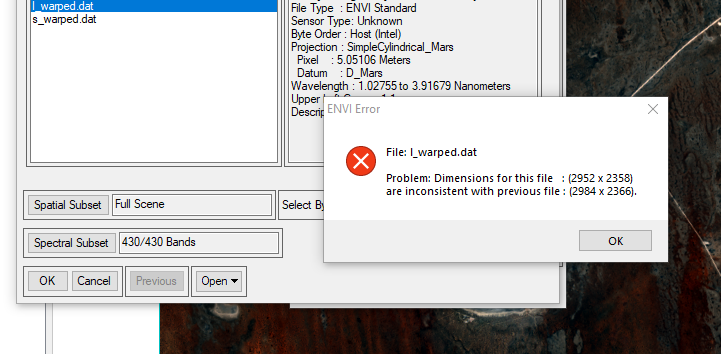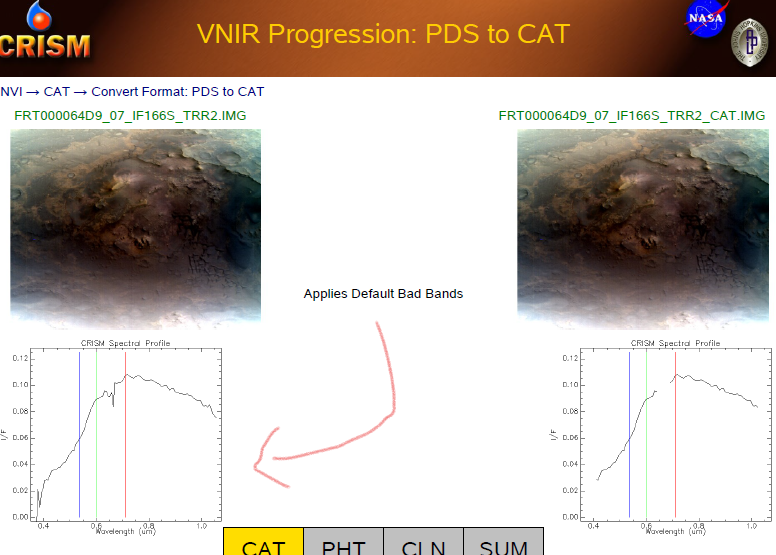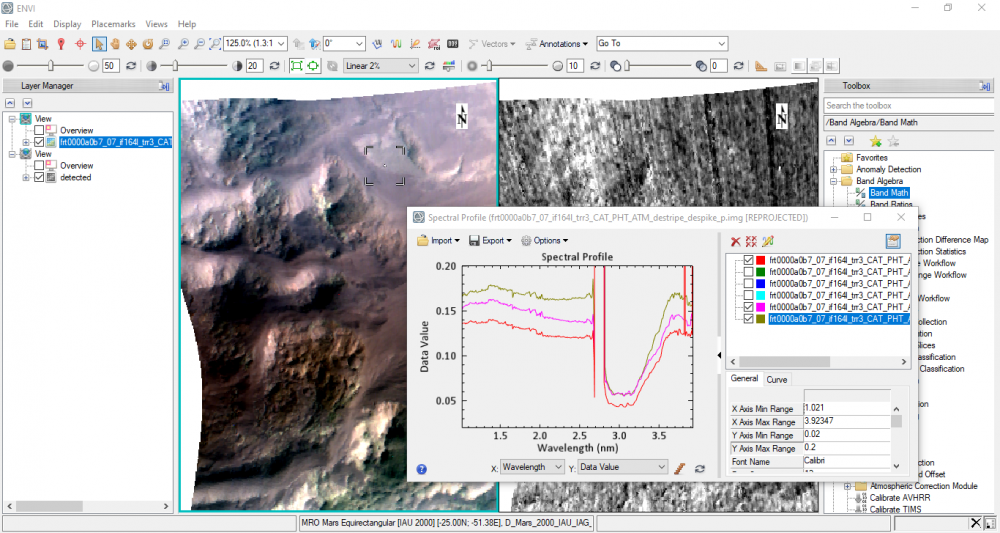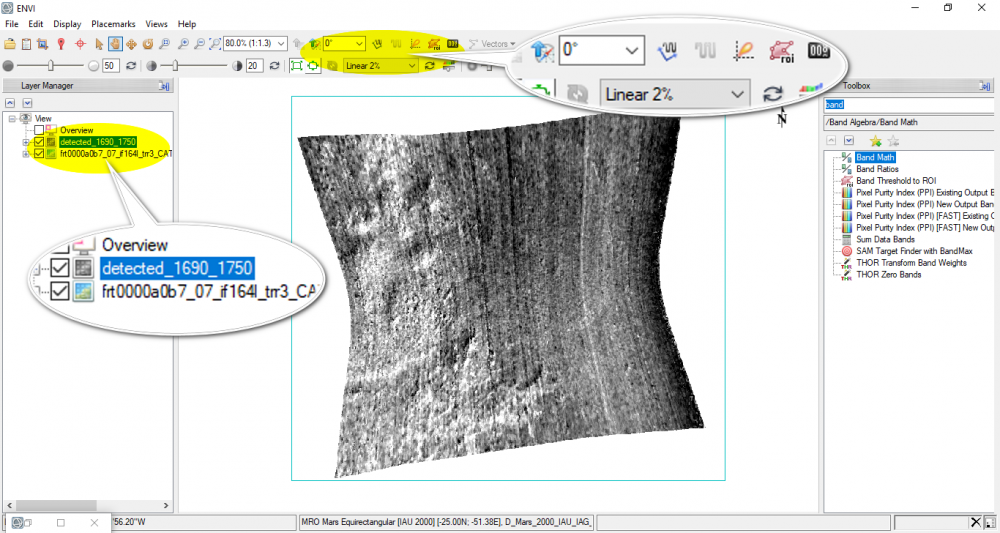Thanks a lot, Sir.
I still have another question, I used ENVI band math to calculate a certain index, the output shows a signle monochrome image as seen below.
By using the mentioned output, I want to display the spectral profile of the bright areas, but the "spectral profile" icon in the ENVI toolbar is disabled, it gives only three options: arbitrary profile, horizental profile, and vertical profile.
Does it occur because the displayed output is one monochrome band? if it's so, how can I fix this, please?
Your help is much appreciated,
Rochdi.

Rare
Rare
Rare
Rare
Rare




